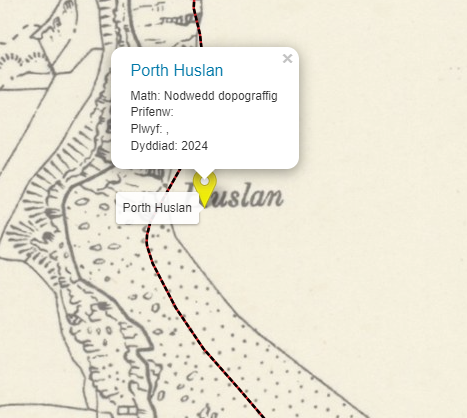Now YOU can help record place names!
Right from the very start of the project, the help of the public has been essential to our work. People have sent us individual names, lists of names, old and modern documents and every kind of map for us to upload their names to the List. We're very grateful for all the help, and for all of the names that we've been sent. Unfortunately, one thing has always hindered the work, and that's the need to geo-locate the names. We need to know, at least roughly, where each name refers to, and since we've only got one member of staff, it's impossible for us to have the degree of precise local knowledge necessary to do this all across the country. Similarly, the people who send us names know where they are, but they may not be sufficiently familiar with grid references to send us a precise enough location. We've solved this problem.

We've been doing a bit of technical development work on the website recently, and all of the changes are now live. As you can see in the above picture, we've added a new button on the left hand side of the screen. This will allow people to find the co-ordinates of anywhere in Wales. All you need to do is click on the button outlined in red in the picture. That will change the cursor. If you then click on the map, a popup will appear with the co-ordinates.

If you send us the name, co-ordinates and the date of the name (that is, as far as you know, the year since which that name has been used), we'll add them to the List as soon as possible. When you're finished searching for co-ordinates, click on the button on the left again, and the cursor will return to normal. We really hope that this will be a clear and easy way for the public to take part in the project, and to enable us to collect more names which don't exist on maps or in documents, but survive in the memories of the people.

